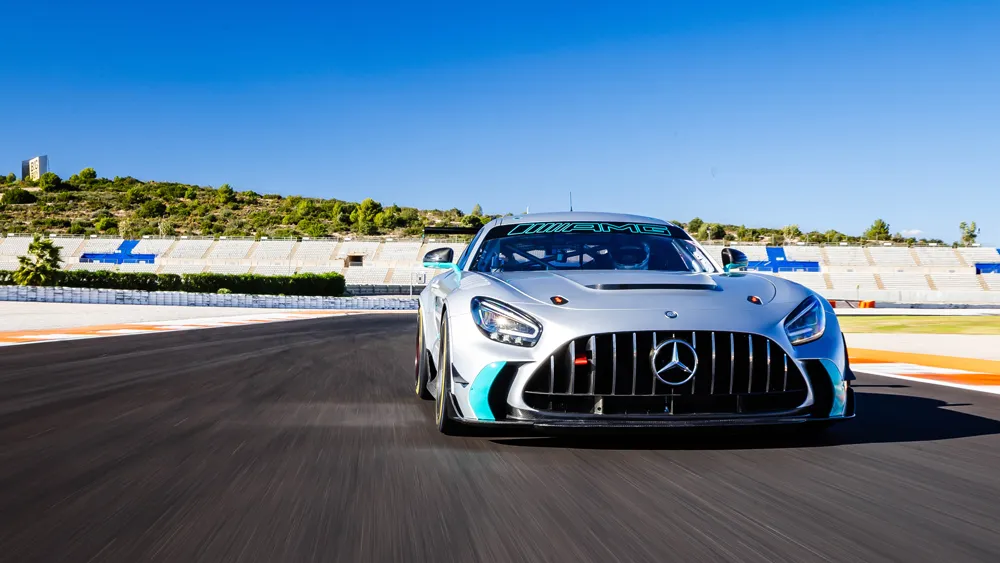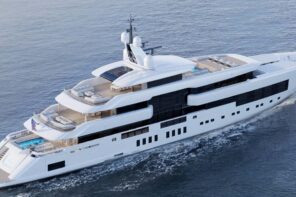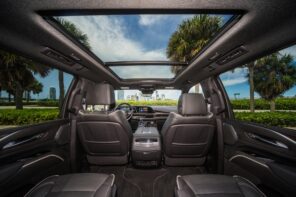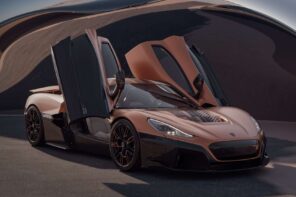Amidst the metallic symphony of wheel guns resonating and the pit crew deftly extracting the tire warmers from beneath the fenders, a distinctive hiss and thunk accompany the lowering of the car onto the ground by the onboard jacks. Depress the red button on the steering wheel resembling a butterfly, and behold, the 697 horsepower twin-turbo V-8 roars to life, settling into a brisk idle.
Engage the clutch, and manipulate the right-hand paddle – the Hewland six-speed transmission with sequential shifts positioned behind you enters first gear with a resounding metallic clunk. Revs ascend and release the clutch. Seek the elusive bite point. There it is! The car surges forward, a cacophony of clanging and banging, whirring and whining, guiding you down the pit lane, beyond the pit exit, and onto the track. Accelerate.
The force propels you firmly into the seat as the engine growls, reminiscent of an irate lion. Lights flash. Manipulate the right-hand paddle.
While racing simulations hold their allure, there is an unparalleled authenticity in the real-life encounter. The Mercedes-AMG GT2, tailored for motorsport enthusiasts, effortlessly channels the spirit of Mario Andretti. Emerging from the AMG production line in Affalterbach, Germany, prepped for racing, this model is engineered to empower those without the razor-sharp reflexes of seasoned drivers to confidently navigate the racetrack at high speeds.
The GT2 joins the ranks of Mercedes-AMG’s factory-built race cars, accompanying the GT4 and GT3 variants. Although visually similar, each offers distinct performance levels. The GT4 serves as the entry-level model, closely aligned with the road-going Black Series edition of the outgoing AMG GT. It shares the dry-sump, flat-plane iteration of AMG’s versatile 4.0-liter twin-turbo V-8 engine. On the other hand, the GT3 boasts a thunderous, naturally aspirated 6.3-liter V-8, featuring a finely tunable race car chassis and aerodynamics providing triple the downforce of the GT4 at 125 mph.
Despite the nomenclature suggesting otherwise, the GT2 is strategically positioned between the GT4 and GT3 in terms of performance and driving experience. It outpaces the former significantly around the track while remaining more approachable near its limits compared to the latter. With GT3 racing demanding elite drivers and substantial budgets, the GT2 emerges as an appealing and affordable option for experienced amateur racers.
Derived from the 2023 AMG GT Track Series, a limited-edition track-day car sharing much of the chassis and mechanical components with the GT4 racer, the GT2 aligns with international GT2 racing regulations. It qualifies for participation in the GT America race series and Fanatec GT World Challenge in the U.S.
The GT2’s 4.0-liter twin-turbo V-8 delivers slightly lower power and torque than its Track Series counterpart – 697 hp and 590 ft lbs compared to 724 hp and 627 ft lbs. Nevertheless, it surpasses the GT4’s engine, tuned for 400 hp to 510 hp, and outperforms the GT3’s 6.3-liter V-8, generating 550 hp and 479 ft lbs.
Boasting a base weight of 3,086 pounds the GT2 exhibits a 20 percent improved weight-to-power ratio compared to the GT3, with a minimum mass of 2,932 pounds. On paper, the GT2 appears considerably swifter on the track. However, one crucial metric demands consideration: depending on wing settings, the GT2 experiences only 50 to 55 percent of the downforce that the GT3 commands.
Enhanced downforce propels the GT3 with greater speed through high-speed corners, an unseen guiding force pressing it firmly onto the track. The GT3’s more intricate, race-engineered chassis and suspension permit drivers to achieve superior handling balance. Although configured and driven correctly, the GT3 emerges as a faster car, yet its optimal performance window is narrower than that of the GT2, with harder-to-approach dynamic limits.
Similar to its GT3 and GT4 counterparts, the GT2 is equipped with a 12-stage traction control and 12-stage antilock brake control. Far from serving as mere safety nets for amateur drivers, professionals leverage these systems to optimize grip levels.
Crafted by SIM racing experts Cube Controls, the steering wheel features an array of control buttons. Behind it lies a dash hosting a Bosch DDU 11 high-resolution display unit. The center console includes essentials such as the ignition switch, a push-button for reverse, the onboard fire extinguisher switch, and even an exterior mirror adjustment button, alongside knobs for managing traction control and ABS settings. All controls are easily accessible and operable, even when adorned with fireproof racing gloves.
Directly available from the AMG factory, the GT2 is priced in euros. On current exchange rates, it falls between $440,000 and $450,000, excluding shipping and taxes. Notably more economical to maintain than the GT3, which, in endurance-racing trim, costs approximately $530,000, plus shipping and taxes. The engine boasts a lifespan of 25,000 racing miles between rebuilds, and the transmission, subject to inspection at 8,000 miles, requires no attention until 11,000 miles.





